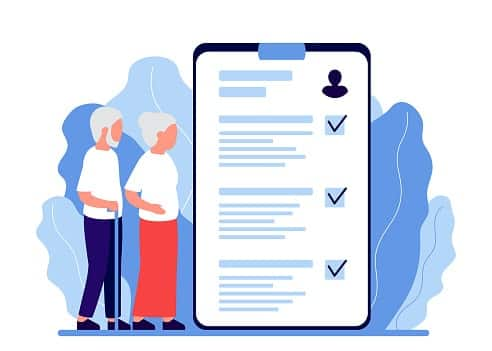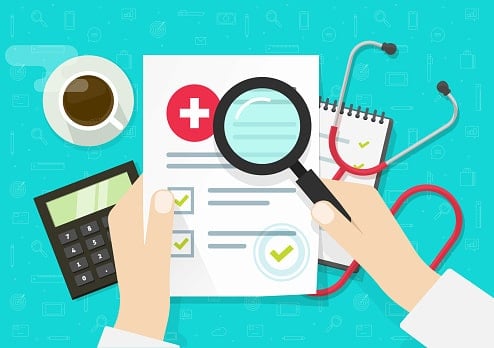- What is open enrollment?
- When is open enrollment for 2026 health insurance plans?
- How long is open enrollment for health insurance?
- Special enrollment periods: How to get health insurance after open enrollment
- What information will I need to enroll in a health plan?
- What is the purpose of open enrollment for health insurance?
- What are my options during open enrollment?
- How to select a health plan during open enrollment
- How much are ACA plan premiums?
- What does a health insurance plan cover?
- What if you don't want health insurance?
- FAQ: Open enrollment
What is open enrollment?
Open enrollment is when you can change your health plan for the coming year or sign up for a new one.
Open enrollment for health insurance generally refers to the online, federal and state health insurance exchanges for plans through the Affordable Care Act (ACA).
Open enrollment information for these health plans can be found at Healthcare.gov. Open enrollment for 2026 health insurance takes place in the fall of 2025 for health plans on the private market.
However, if you get health insurance at work, you may have a separate open enrollment period designated by your employer.
When is open enrollment for 2026 health insurance plans?
Open enrollment for Affordable Care Act plans starts on Nov. 1 and goes through Jan. 15, 2026. To get coverage starting on Jan. 1, 2025, you must select a plan by Dec. 15. These dates are subject to change, so check with your state's healthcare marketplace for confirmation.
Some states have longer open enrollment periods, though dates are subject to change. These longer periods do not apply to plans starting on January 1. Currently, these states have longer enrollment periods:
- California: Nov. 1, 2025 to Jan. 31, 2026
- Idaho: Oct. 15th, 2025 to Jan. 15, 2026
- Maryland: Nov. 1, 2025 to Dec. 15, 2026
- Massachusetts: Nov. 1, 2025 to Jan. 23, 2026
- New Jersey: Nov. 1, 2025 to Jan. 31, 2026
- New York: Nov. 1, 2025 to Jan. 31, 2026
- Rhode Island: Nov. 1, 2025 to Jan. 31, 2026
- Washington, D.C.: Nov. 1, 2025 to Jan. 31, 2026
How long is open enrollment for health insurance?
Open enrollment for healthcare generally lasts about two and a half months – but some states give their residents a little less time, and some states a little more.
Do you have to apply for health insurance every year?
No. You don't have to reapply if you like your current healthcare plan. Do nothing (keep paying your premiums), and you’ll keep your health insurance.
Special enrollment periods: How to get health insurance after open enrollment
A special enrollment period is usually only available to people with qualifying life events, such as:
- You get married
- You get divorced and get your health insurance through your spouse's employer
- You have a baby, adopt a baby or place a child for adoption or foster care
- Your spouse or partner dies and that leaves you without health insurance
- Your spouse or partner loses a job and you had coverage through their employer
- You lose your job and had coverage through your work
- You are no longer a full-time employee eligible for workplace coverage
- You are in an HMO and move outside its coverage area
- You leave jail or gain citizenship
You won't qualify for a special enrollment period if you voluntarily drop your coverage. The only time you can re-enroll is during open enrollment.
If you apply for a special exception and are rejected, you can appeal the decision to the Health Insurance Marketplace.
People with income up to 150% of the federal poverty level ($20,385 for a single person, $34,545 for a family of three) can sign up for marketplace coverage at any time. The Centers for Medicare and Medicaid Services estimates that about one-third of marketplace plan members will qualify for this monthly special enrollment period.
Your employer will also grant you a special enrollment period with a qualifying life event. Check with your HR department for details.
What information will I need to enroll in a health plan?
So, what is there to know before open enrollment? That you’ll be doing some paperwork – possibly a lot of it.
Applying for health insurance will go more smoothly if you have everything on hand before applying. Fortunately, if you don’t have everything, you can always return to your online application; the website will save your work.
Healthcare.gov will list everything you need, but generally, the documents you will need include:
- Proof of income. You'll need a 1040 federal or state tax return, along with wages and tax statement (such as a W-2 or 1099), a pay stub (if you have one) or self-employment ledger documentation (such as a Schedule C). If you have Social Security Administration statements or an unemployment benefits letter, that may suffice.
- Immigration information. If you are an immigrant, you’ll need a permanent resident card (also known as a green card), a re-entry permit, a refugee travel document or an employment authorization card – and there are about a dozen other documents that you may use. Again, Healthcare.gov has a lengthy list.
- Citizenship. If you’re a citizen of the United States, you’ll need to provide proof, like a U.S. passport, a state-issued enhanced driver’s license or a birth certificate. The list of documents you can submit is long, but you’ll only need one or two to prove you are who you are. For instance, a birth certificate and driver's license would work.
- Documents pertaining to adoption. If you have adopted or have a foster child and want them on your health plan, you’ll need to show proof that you’re the parent or legal guardian. You’ll need to provide an adoption letter, record or foster care papers (signed by a government or court official).
What is the purpose of open enrollment for health insurance?
Although having a limited window to enroll in health insurance can be frustrating, there are reasons for the open enrollment period.
Health insurance companies are trying to keep healthcare costs down and limit what is known in the industry as “adverse selection,” which is when healthy people resist signing up for health insurance while sick people do.
If you know that you can get health insurance whenever you want to, you might opt not to get it or get the cheapest plan available. Then, if your health changes, you could switch to a plan with better coverage.
Health insurance exists to help people pay for eligible medical expenses. There’s nothing wrong with using it. But the health insurance industry would go broke if people only paid for coverage if they suddenly needed it. Just like the car insurance industry would go out of business if people could buy car insurance after having an accident.
Open enrollment for health insurance incentivizes people to buy health insurance and get it in place before it’s needed.
What are my options during open enrollment?
Depending on your situation, you have the following options during healthcare open enrollment:
- Renew your current policy. You can keep your current health insurance as long as it's still offered. You may not need to take any action to maintain what you have. However, you should watch for any changes, such as changes in provider network or coverage that might affect how the plan works for you.
- Buy an individual policy through a marketplace or directly from an insurance provider. You can buy an individual health plan through the ACA marketplace or directly from an insurance provider.
- Make changes to your employer-based group health insurance. You must sign up for coverage during your employer's open enrollment period, which may differ from the ACA open enrollment period. Employers often change health insurance providers, so be sure to review your options.
- Change your Medicare plan. If you are enrolled in Medicare and want to change your plan – such as switching to Medicare Advantage (Part C) or adding prescription drug coverage (Part D) – you must sign up during its open enrollment period.
- Buy a short-term health plan. Short-term health insurance plans are a low-cost option. They aren't nearly as generous as ACA plans and don't have to cover basic services, such as maternity, prescriptions and mental health; consider this option carefully.
How to select a health plan during open enrollment
If you're buying a health plan through the ACA marketplace, you have a choice of four metal levels and a fifth, limited option:
- Bronze
- Silver
- Gold
- Platinum
- Catastrophic (available to people younger than 30 or older than 30 if you're eligible for a hardship or affordability exemption)
The metal tiers each have different premiums and out-of-pocket costs. Bronze plans have the highest deductibles and copays, while Platinum plans have the lowest. However, the premiums for the Bronze plans are the lowest, while Platinum plans cost the most each month.
The most popular plans in the individual market are Silver and Bronze. According to a report by eHealth, the percentage of people who choose each level is:
- Bronze: 36%
- Silver: 39%
- Gold: 17%
- Platinum: 1%
When deciding what plan is best for you, think about your health and your family's health – and financial situation.
Do you see a doctor or other health care provider regularly to help you manage a chronic disease or condition? Do you take costly medications? You may want a health plan that has lower copays and deductibles if you're a frequent user of services.
If you're young and healthy and use few medical services, you may want a plan with lower premiums, such as a Bronze plan. Of course, you never know what can happen. And you can't change your plan outside open enrollment just because something happened to you.
Look at the out-of-pocket maximums for the plans you're considering.
- Can you afford the premiums?
- Can you pay the out-of-pocket costs and deductibles if you need care?
- Are your doctors and hospitals in the plan's network?
- Do you mind getting a referral to see a specialist?
- Do you want the flexibility to see providers outside of your network?
Once you answer these questions, you can compare plans and see what's best for you.
You will also have to decide what type of plan you want in terms of provider access.
The three most common types of health insurance plans are health maintenance organization (HMO), exclusive provider organization (EPO) and preferred provider organization (PPO) plans.
PPOs are usually more expensive and don't require doctor referrals to see specialists. PPOs also allow you to get care outside of your provider network -- though at a higher price than in-network. HMOs and EPOs don't pay for care outside of provider networks.
How much are ACA plan premiums?
ACA plan average premiums increased in 2025.
In 2025, the average monthly ACA premium was $497 for the Silver benchmark plan, according to the Kaiser Family Foundation, a nonprofit that focuses on national health issues. Subsidies may lower that considerably.
Let's take a look at the average premiums for the lowest-cost plan at each metal tier individual 2025, according to the Kaiser Family Foundation:
- Bronze: $381
- Silver: $486
- Gold: $507
The Kaiser Family Foundation doesn’t list the average price of a Platinum plan.
Platinum plans require the insurer to pay 90% of the costs and the policyholder to pay 10%. This high level of coverage usually means the highest premiums as well.
What does a health insurance plan cover?
Under the Affordable Care Act, plans must provide at least these essential benefits:
- Outpatient care, including chronic disease management
- Emergency care
- Hospitalization
- Pregnancy and newborn care
- Mental health and substance abuse services
- Prescription drugs
- Rehabilitation services and devices
- Lab tests
- Preventive and wellness services
- Dental and vision care for children
Insurance plans can offer benefits in addition to the required benefits. The best way to find out what benefits each plan covers is to compare on its website.
What if you don't want health insurance?
If you don't want to sign up for health insurance during the open enrollment period, you must wait an entire year if you change your mind. The exception is if you have a qualifying life event that would spark a special enrollment period.
Remember that you no longer get penalized at tax time for not having health insurance. Congress eliminated the tax penalty.
However, a handful of states have mandates:
- California
- District of Columbia
- Massachusetts
- New Jersey
- Rhode Island
- Vermont
You may be fined at tax time if you don't have health insurance in those states.
Health insurance finder tool

COBRA
Learn more about COBRA
How much is your annual household income?
How many members are in your household?
Medicare
Medicare costs vary depending on which option you choose.
Learn more about Medicare costs.
Medicaid

Parent's employer-sponsored health insurance

Spouse's employer-sponsored health insurance

Employer-sponsored health insurance

Preferred-provider Organization (PPOs)
Preferred-provider organization (PPOs) plans are the most common type of
employer-based health plan. PPOs have higher premiums than HMOs and HDHPs, but
those added costs offer you flexibility. A PPO allows you to get care anywhere
and without primary care provider referrals. You may have to pay more to get
out-of-network care, but a PPO will pick up a portion of the costs.
Find out more about the differences between plansHealth maintenance organization (HMO)
Health maintenance organization (HMO) plans have lower premiums than PPOs.
However, HMOs have more restrictions. HMOs don't allow you to get care outside
of your provider network. If you get out-of-network care, you'll likely have to
pay for all of it. HMOs also require you to get primary care provider referrals
to see specialists.
Find out more about the differences between plansHigh-deductible health plans (HDHPs)
High-deductible health plans (HDHPs) have become more common as employers look
to reduce their health costs. HDHPs have lower premiums than PPOs and HMOs, but
much higher deductibles. A deductible is what you have to pay for health care
services before your health plan chips in money. Once you reach your deductible,
the health plan pays a portion and you pay your share, which is called
coinsurance.
Find out more about the differences between plansExclusive provider organization (EPO)
Exclusive provider organization (EPO) plans offer the flexibility of a PPO with
the restricted network found in an HMO. EPOs don't require that members get a
referral to see a specialist. In that way, it's similar to a PPO. However, an
EPO requires in-network care, which is like an HMO.
Find out more about the differences between plans
Learn more about individual insurance plans
FAQ: Open enrollment
Is open enrollment the same for all companies?
No. If you’re getting your health insurance from an employer, there will likely be a short window of time for your open enrollment, but it can be at any time of the year and for any length of time. That’s up to your employer. Typically, an employer’s open enrollment period lasts two to four weeks.
What happens if I miss the open enrollment deadlines?
If you have an employer, talk to your human resources department. Unfortunately, you will probably have to go without insurance until the next open enrollment period or buy your own plan from an insurance broker.
What can you do if your 2025 coverage is not available in 2026?
If your 2025 coverage is no longer offered in 2026, you must find a new health plan. Your insurance company may have a similar plan to replace the one that’s no longer available, or you can compare other plans.














